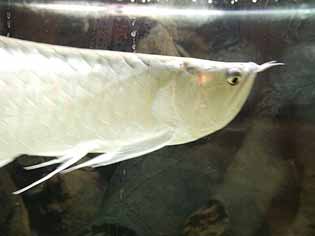
Arowanas & Saratogas
A GUIDE TO CARING FOR AROWANA & SARATOGA

Probably the most majestic fish within modern day fish keeping aquariums. Named the dragon fish by Chinese aquarists for good reason, its large coloured scales and beautiful movement make it seem like a shiny monster in the water.
This fish has many different variations leading to huge differences is pricing. The Australian version of the Arowana is the Saratoga, both the Jardini and Leichardti are great additions, they uphold the same characteristics as the Arowana’s found overseas, its just they are legal within Australia.

Silver Arowana
- The silver Arowana is by far the most common and popular in the United States due to its cheap price and small starting size. You must not be fooled however, for it can grow up to 2 feet in length and easily break through aquarium glass if it becomes startled or angry.

Green & RTG Arowana
- Other variations include the Green Arowana, which is slightly more expensive and then the RTG variety, which are imported from overseas with a microchip.
- RTG species are near extinction and so there prices have become astronomical, around $1000-5000 for a single fish. If you are not an experienced hobbyist then don’t even bother. They are the same as any other type of arowana, it is just they are becoming so rare the price and demand has gone through the roof.

Feeding Arowana
- Arowana’s will need to be fed a composite diet of both meat and vegetables. If just fed fatty, meaty food’s there will be a build up of fat above its eye, resulting in the unwanted “drop eye” syndrome which substantially decreases its reselling value.
- Live foods will be a nice treat for these monsters although it can promote agression. They are best kept with a small school of Arowana's but of course this is most difficult due to the extremely large tank you would need. Try not to turn your Arowana sour and into a blood thirsty predator by only offering live food as a treat or occaisonal snack.
- Crickets and mealworms are great and whats even better is you are able to breed these seperately to have a constant supply of food!

Temperament
- This fish should not be kept with any other smaller fish in the aquarium, it will need to be completely solitary unless with its own kind or other huge fish. Try to keep more than two if you keep a species tank as just having two can become very territorial.

